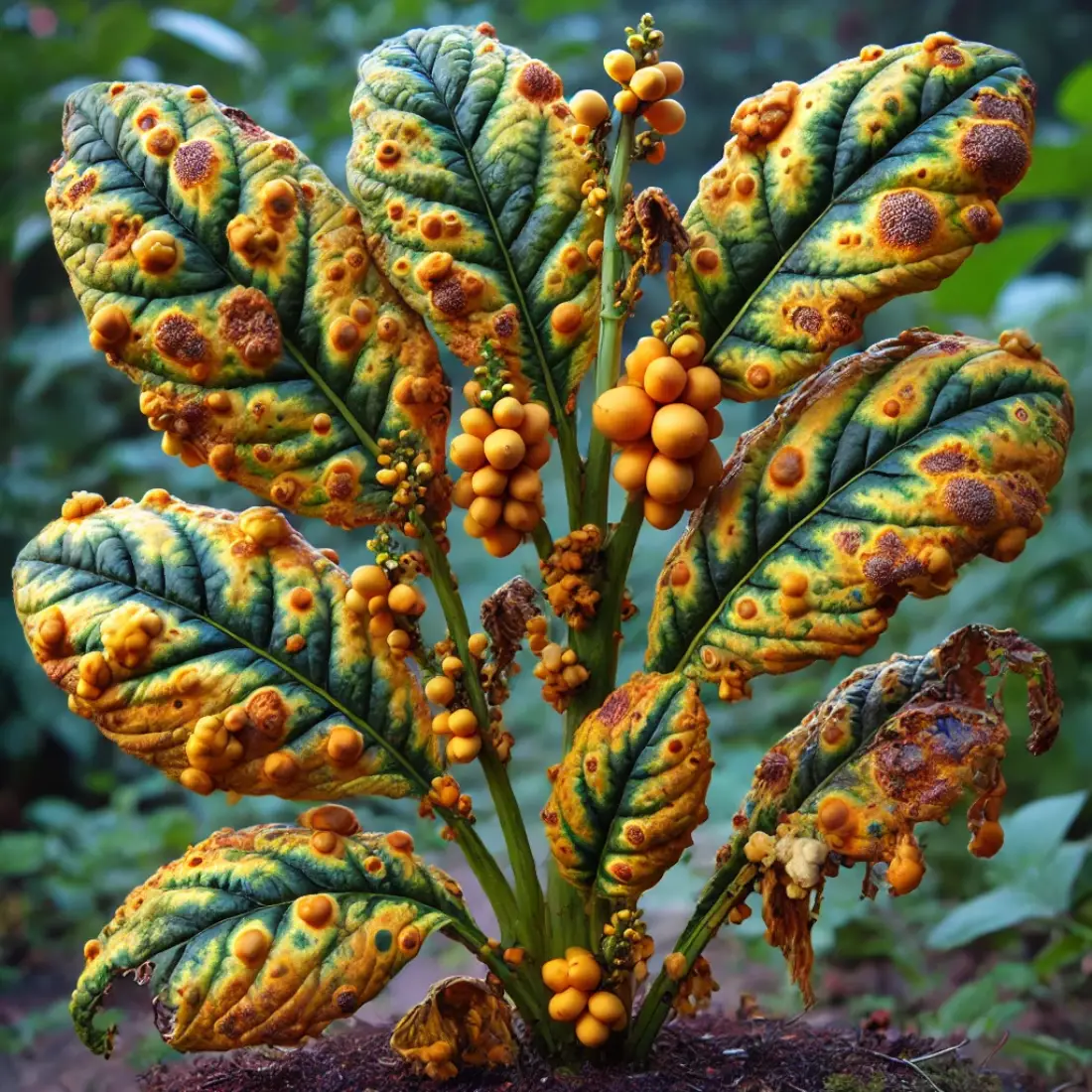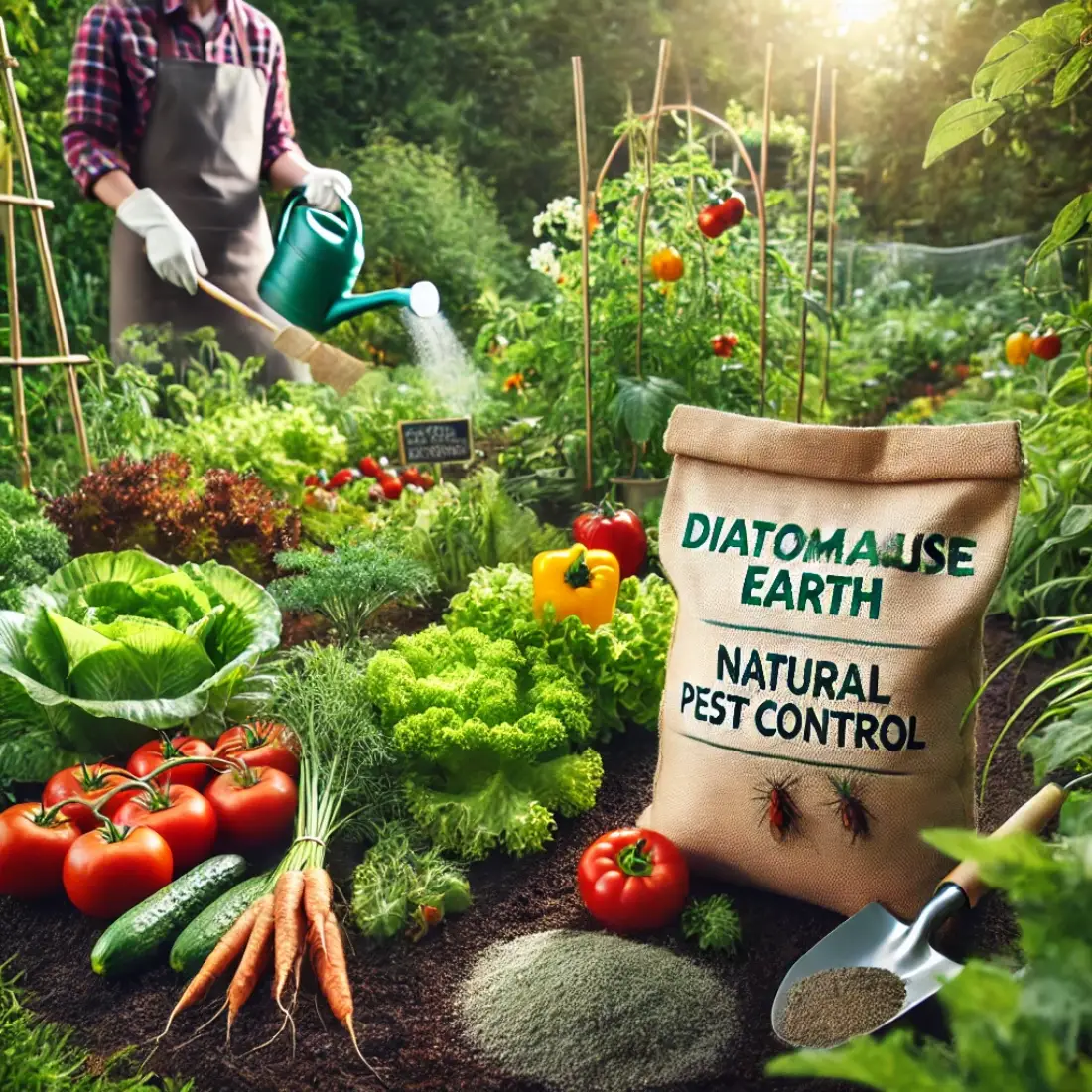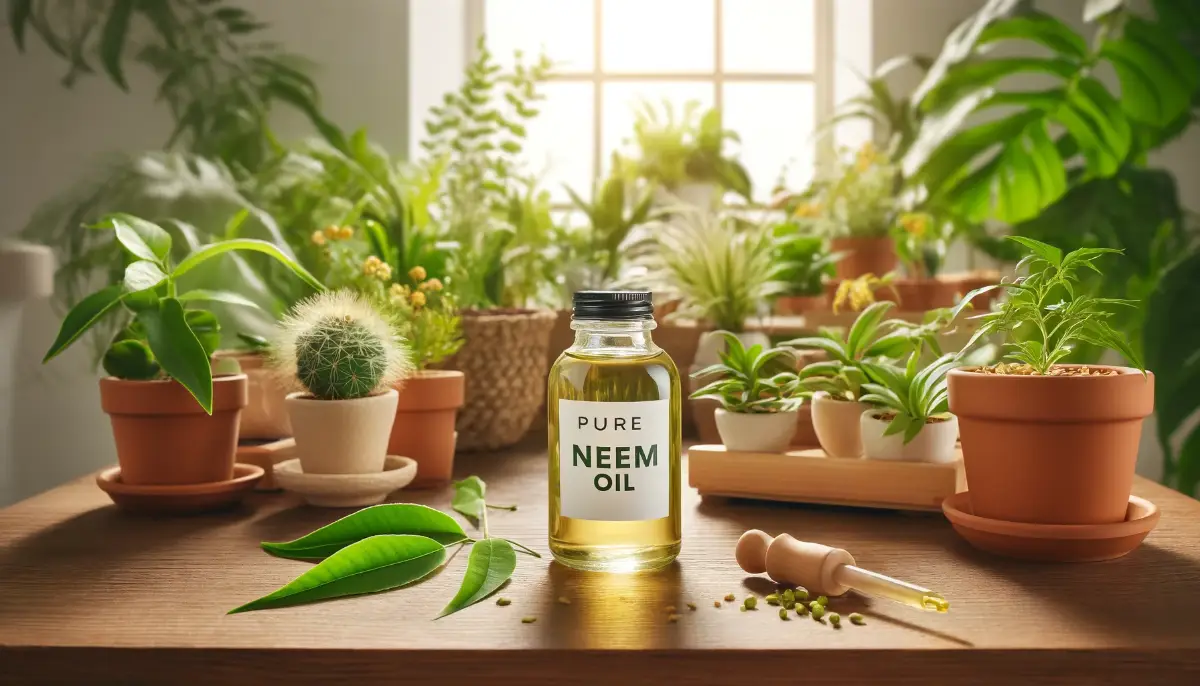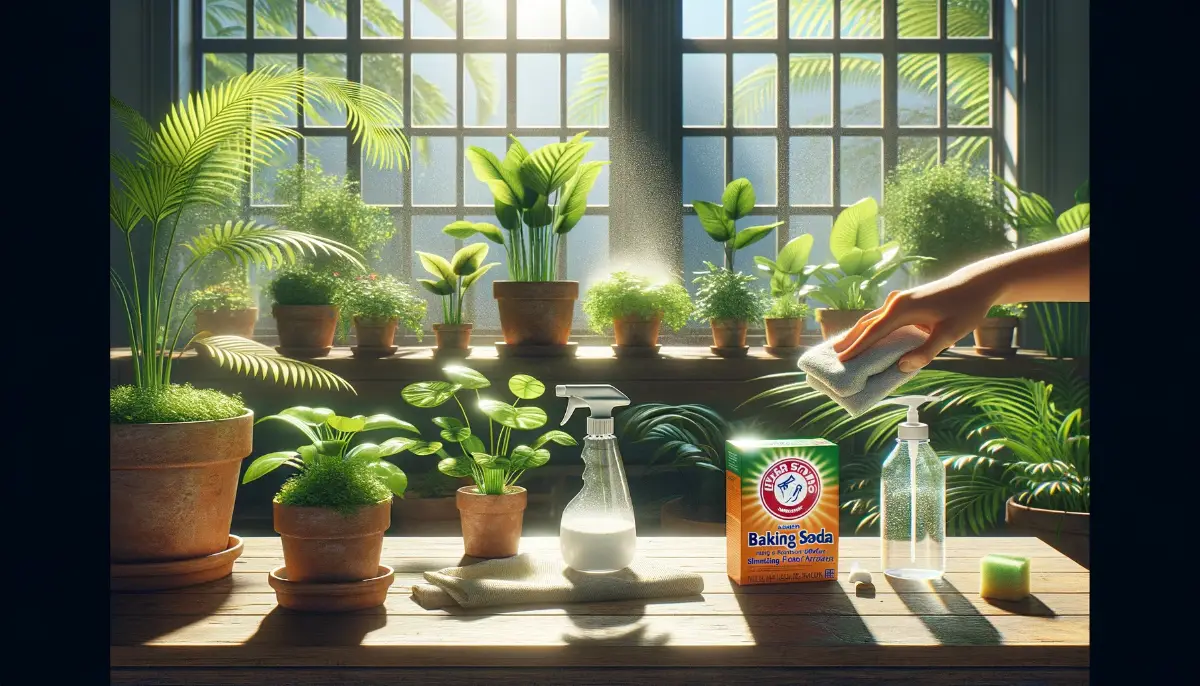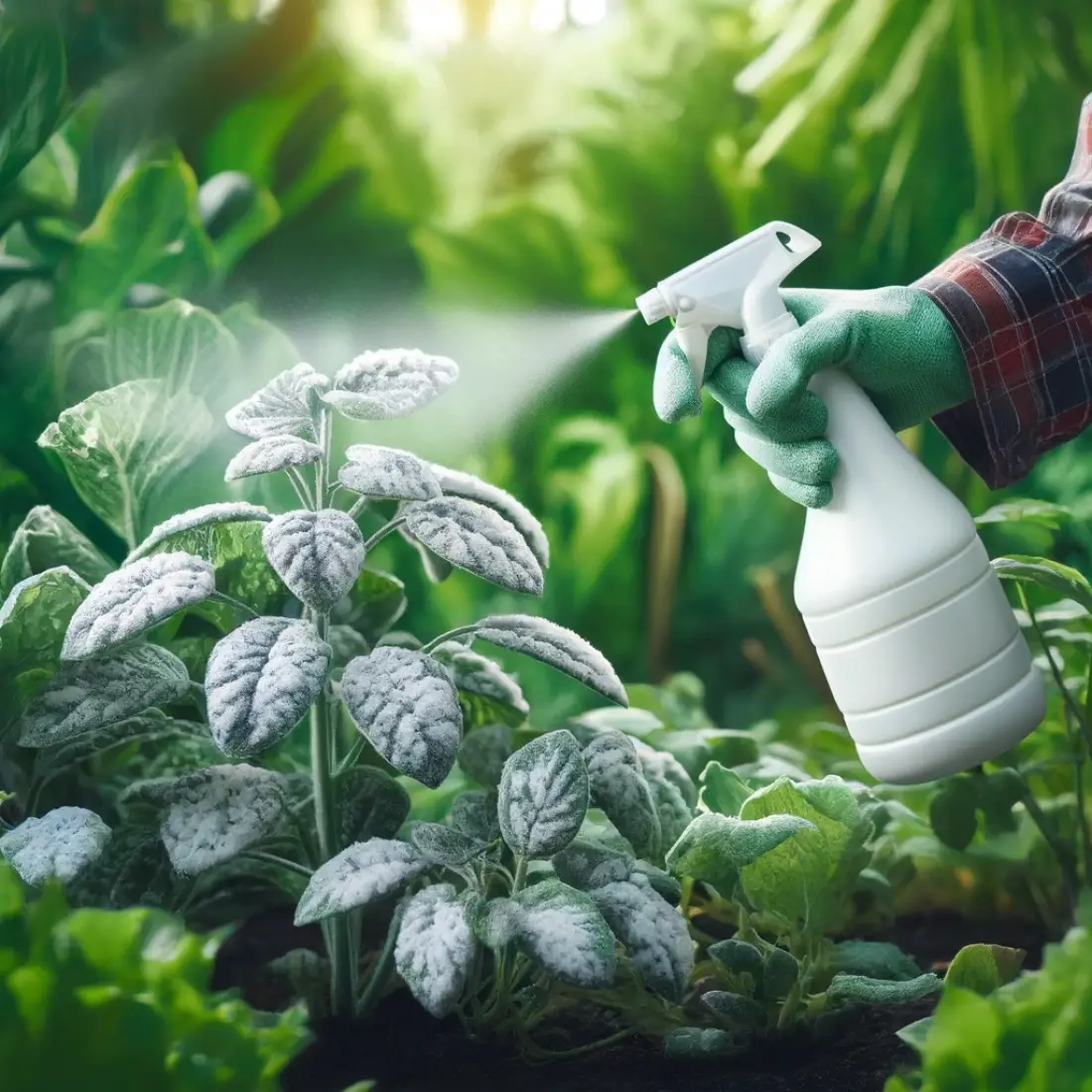Rust is a pervasive plant disease caused by a variety of fungi from the order Pucciniales. This disease is characterized by the presence of yellow, orange, or brown pustules on the leaves and stems of affected plants. Rust can significantly impact plant health, leading to reduced vitality, lower yields, and, in severe cases, plant death.
Understanding rust is crucial for both gardeners and farmers, as early detection and proper management can prevent widespread damage. Rust fungi thrive in specific environmental conditions, particularly where humidity is high, and temperatures are moderate. They spread rapidly through spores carried by wind, water, and even insects.
- Rust is a common plant disease caused by fungi.
- It affects a wide range of plants, leading to decreased vitality and crop yields.
- Organic treatments and prevention methods can effectively manage rust.
Causes of Rust in Plants
Rust in plants is caused by fungi from the order Pucciniales, with over 7,000 species, including Puccinia, Uromyces, and Cronartium. These fungi are obligate parasites, requiring living plant tissue to grow and reproduce.
Environmental conditions significantly influence rust development. Rust fungi thrive in high humidity and moderate temperatures, generally between 50°F and 77°F (10°C and 25°C). Prolonged leaf wetness from rain, dew, or overhead irrigation promotes spore germination and infection.
Certain plant characteristics increase susceptibility to rust. Stressed plants, due to poor nutrition, improper watering, or other diseases, are more likely to be infected. Dense planting and poor air circulation create favorable conditions for fungal growth.
Rust fungi have complex life cycles, often involving multiple spore stages and different host plants. For example, Puccinia graminis, causing wheat stem rust, requires both wheat and barberry plants to complete its cycle. The presence of alternate host plants can facilitate rust spread.
Plants Commonly Affected by Rust
Rust is a widespread plant disease affecting a diverse range of plant species, including cereals, vegetables, and ornamentals. Understanding which plants are commonly affected can help gardeners and farmers take preventive measures.
Cereals: Cereal crops, particularly wheat, barley, and oats, are highly susceptible to rust. Wheat stem rust, caused by Puccinia graminis, is a significant threat to wheat production worldwide. Similarly, barley is often plagued by barley leaf rust (Puccinia hordei), and oats can suffer from oat crown rust (Puccinia coronata). These rust infections can lead to substantial yield losses if not properly managed.
Vegetables: Various vegetables are also prone to rust infections. Bean rust (Uromyces appendiculatus) affects common beans, causing reddish-brown pustules on leaves and pods. Asparagus rust (Puccinia asparagi) is a common problem for asparagus growers, leading to reduced vigor and yield. Other affected vegetables include garlic, leeks, and onions, which can suffer from leek rust (Puccinia allii).
Ornamentals: Rust significantly impacts ornamental plants, causing aesthetic damage and weakening plants. Roses are particularly vulnerable to rose rust (Phragmidium mucronatum), which causes orange or rust-colored spots on leaves.
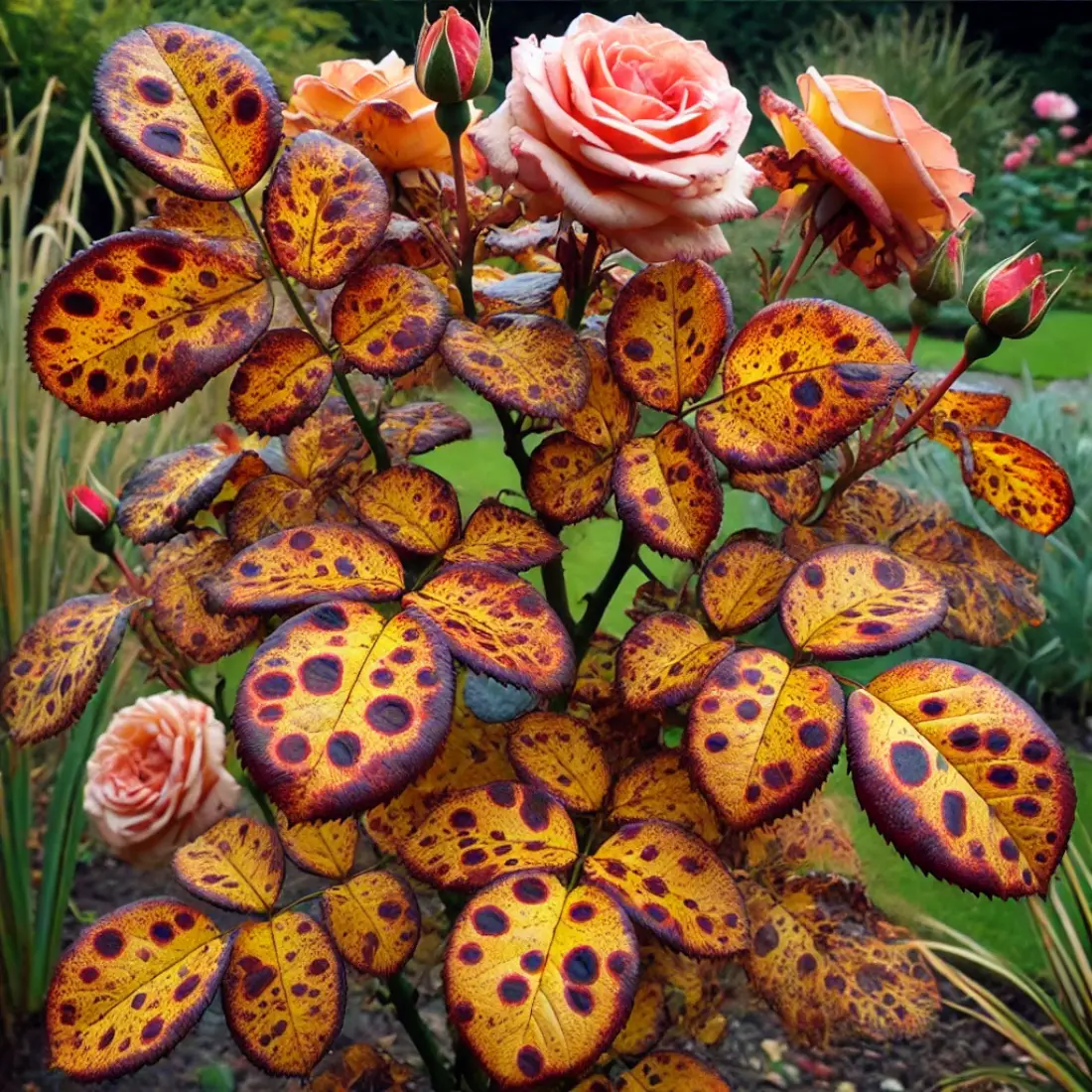
Hollyhocks often fall victim to hollyhock rust (Puccinia malvacearum), leading to unsightly yellow or orange pustules on the undersides of leaves. Snapdragons, daylilies, and geraniums are among other ornamentals frequently affected by rust diseases.
Fruit Trees: Fruit trees, such as apple and pear trees, can be affected by rust diseases. Cedar-apple rust (Gymnosporangium juniperi-virginianae) requires both apple trees and eastern red cedars to complete its life cycle, causing bright orange spots on apple leaves and fruit.
Identifying Rust on Plants
Identifying rust on plants is crucial for early intervention and effective management. Rust is characterized by distinct symptoms that vary slightly depending on the plant species and rust fungus involved.
Visual Signs: Rust typically manifests as yellow, orange, reddish, or brown pustules on the leaves, stems, and sometimes fruits of plants. These pustules are actually clusters of spores produced by the rust fungi. Infected leaves often show small, raised spots that may coalesce into larger lesions. Over time, these pustules can rupture, releasing spores that appear powdery or dusty.
Leaf Symptoms: Early signs include small, discolored spots on the upper leaf surface. As the infection progresses, the spots enlarge and become more prominent. The undersides of leaves usually exhibit the most noticeable pustules. Severe infections can cause leaves to yellow, wilt, and eventually drop prematurely. In some cases, infected leaves may curl or become distorted.
Stem and Fruit Symptoms: Rust can also affect plant stems and fruits, although less commonly than leaves. On stems, rust appears as elongated lesions or streaks that can weaken the plant’s structural integrity. On fruits, rust may cause blemishes that reduce marketability and quality.
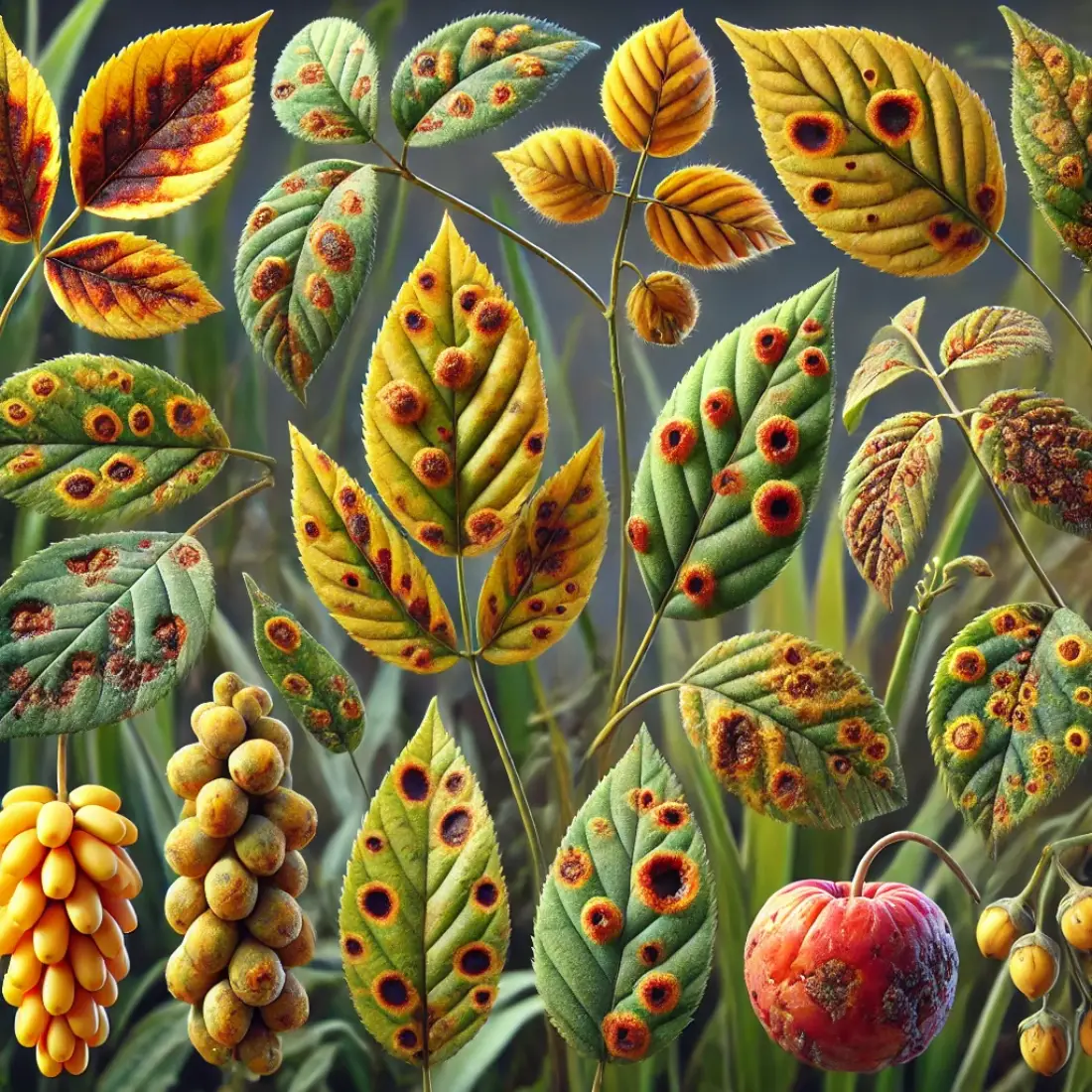
Differentiating Rust from Other Diseases: It’s essential to distinguish rust from other plant diseases with similar symptoms, such as leaf spots or blights. The key distinguishing feature of rust is the presence of pustules that contain powdery spores. Unlike other fungal diseases, rust pustules are often brightly colored and may have a distinct rusty appearance.
Importance of Early Detection: Early identification of rust is critical for controlling its spread. Regularly inspecting plants, especially those known to be susceptible to rust, helps in catching the disease early. Removing and destroying infected plant parts can prevent spores from spreading to healthy plants.
Organic Treatment Options for Rust
Managing rust in plants organically involves a combination of cultural practices, natural treatments, and preventive measures. These methods aim to control rust without harming the environment or non-target organisms. Here are some effective organic treatment options for rust.
Cultural Practices: Implementing good gardening practices can significantly reduce rust incidence.
- Crop Rotation: Rotating crops helps break the life cycle of rust fungi, particularly those requiring alternate hosts.
- Plant Spacing: Proper spacing ensures good air circulation, reducing humidity levels that favor rust development.
- Watering Practices: Avoid overhead watering to minimize leaf wetness. Water plants at the base instead.
- Sanitation: Remove and destroy infected plant debris to reduce sources of rust spores.
Neem Oil: Neem oil is a popular organic fungicide that works by disrupting the life cycle of rust fungi. It can be applied as a foliar spray to prevent and control rust infections. Regular applications every 7-10 days can help keep rust at bay, especially during wet, humid conditions.
Baking Soda Solution: A mixture of baking soda and water can create an alkaline environment that inhibits fungal growth. To make the solution, mix 1 tablespoon of baking soda, 1 tablespoon of vegetable oil, and a few drops of liquid soap in 1 gallon of water. Spray this mixture on affected plants weekly.
Compost Tea: Compost tea, made from steeping compost in water, contains beneficial microorganisms that can help suppress rust fungi. Apply compost tea as a foliar spray to boost plant immunity and reduce rust severity.
Copper Fungicides: Copper-based fungicides are effective against rust and are approved for organic use. They work by inhibiting fungal spore germination. Apply copper fungicides early in the growing season and repeat as needed, following label instructions.
Sulfur: Sulfur is another natural fungicide that can help control rust. It can be dusted on plants or mixed with water and sprayed. Ensure thorough coverage of affected areas for best results.
Garlic Extract: Garlic extract has antifungal properties that can help manage rust. Crush a few garlic cloves and steep them in water overnight. Strain the mixture and spray it on plants weekly.
Milk Spray: Diluted milk (1 part milk to 9 parts water) can act as a fungicide. Spray the mixture on plants every 10-14 days to prevent and control rust infections.
By combining these organic treatments with diligent cultural practices, gardeners and farmers can effectively manage rust in plants. Regular monitoring and early intervention are key to preventing severe rust outbreaks and maintaining healthy, productive plants.
FAQs about Rust in Plants
What causes rust on plants?
Rust is caused by a variety of fungi from the order Pucciniales. These fungi are obligate parasites, meaning they require living plant tissue to grow and reproduce. Environmental conditions like high humidity and moderate temperatures favor rust development.
How does rust spread?
Rust spreads through spore dissemination by wind, water, and insects. Spores can travel long distances and infect plants under suitable conditions. Dense planting and poor air circulation can facilitate the spread of rust.
Which plants are commonly affected by rust?
Rust affects a wide range of plants, including cereals (wheat, barley), vegetables (beans, asparagus), ornamentals (roses, hollyhocks), and fruit trees (apple, pear). Each type of rust fungus typically infects specific plant species or families.
What are the symptoms of rust on plants?
Rust appears as yellow, orange, reddish, or brown pustules on leaves, stems, and sometimes fruits. Infected leaves often show small, raised spots that may coalesce into larger lesions. Severe infections can cause leaves to yellow, wilt, and drop prematurely.
How can I prevent rust in my garden?
Prevent rust by implementing good gardening practices such as crop rotation, proper plant spacing, avoiding overhead watering, and maintaining plant health. Regularly inspect plants for early signs of rust and remove infected plant debris promptly.
Are there any effective organic treatments for rust?
Yes, effective organic treatments include neem oil, baking soda solution, compost tea, copper fungicides, sulfur, garlic extract, and diluted milk spray. Combining these treatments with good cultural practices can effectively manage rust.
Can rust affect indoor plants?
Rust primarily affects outdoor plants, but it can also infect indoor plants if conditions are favorable. Ensure proper air circulation, avoid overwatering, and inspect indoor plants regularly to prevent rust infections.
Is rust harmful to humans?
Rust fungi are not harmful to humans. However, they can significantly impact plant health and productivity. Managing rust is important to maintain healthy plants and avoid crop losses.
How do I identify rust on my plants?
Identify rust by looking for yellow, orange, reddish, or brown pustules on leaves, stems, or fruits. The presence of powdery spores within these pustules is a key characteristic of rust. Early detection is crucial for effective management.
Can rust be completely eradicated from plants?
While it is challenging to completely eradicate rust, it can be effectively managed with a combination of organic treatments and preventive measures. Regular monitoring, early intervention, and good gardening practices can minimize rust’s impact on plants.

